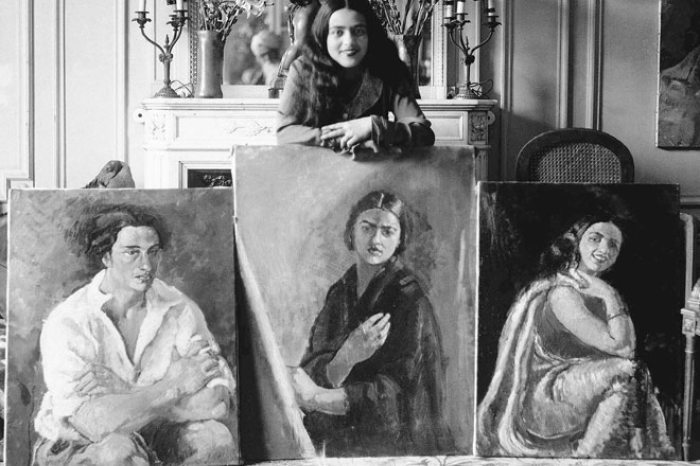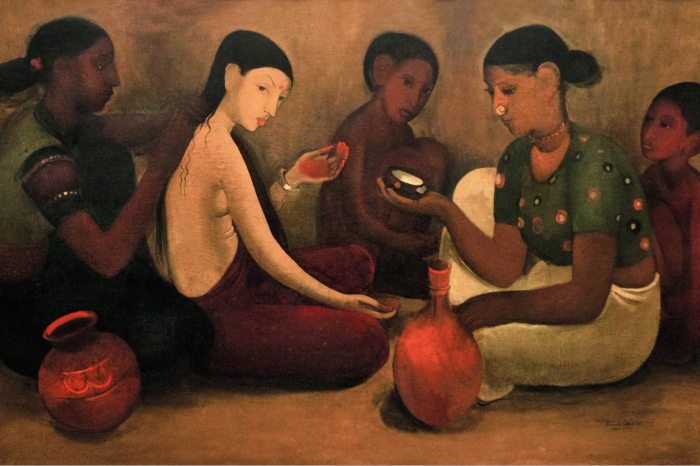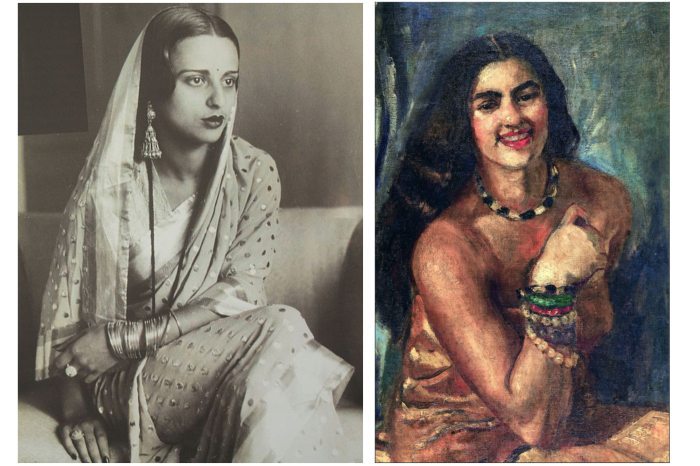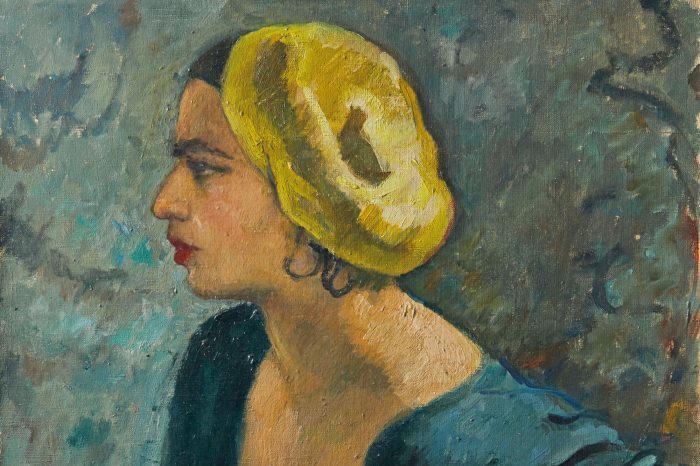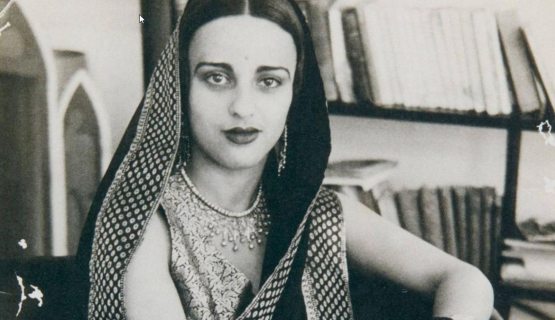India’s national treasure was half-Hungarian and lived only 28 years – Indian-Hungarian painter Amrita Shér-Gil was born 110 years ago
In just six years of her adult life, Hungarian-Indian-born painter Amrita Sher-Gil has created an impressive oeuvre of paintings that is now a national treasure in India. She has lived in many places, she was equally at home in Paris, Hungary, India, and Florence, but somehow she has never found true peace anywhere. She had many love affairs but was unable to trust anyone enough to commit herself wholeheartedly. Happy and deeply depressed, scandal after scandal, and constantly breaking the rules, she lived and created passionately between worlds, continents, and cultures, especially Hungary and India.
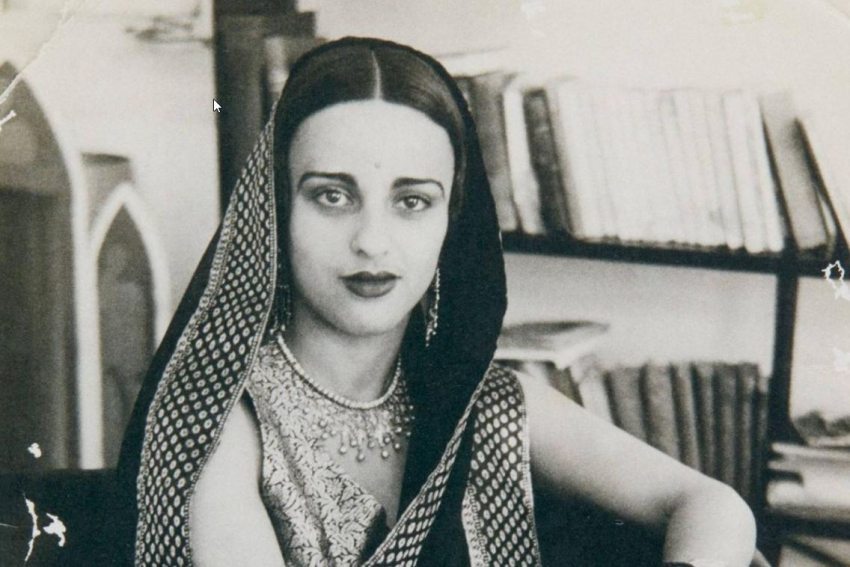
Little Amrita, whose Hungarian first name was Dalma, was born in Budapest in 1913. With her black eyes, thick dark hair, and laugh, she immediately swept her father, Umrao Singh Sher-Gil, an Indian Sikh aristocrat, polymath, contemplative scholar, and amateur photographer off his feet. Her mother, Gottesmann Marie-Antoinette, had a completely different temperament: she was a sociable aspiring opera singer, born into a Hungarian-Austrian-French-Jewish noble family. The parents agreed to baptize the girl Catholic, although they did not believe in any particular religion. A year later, in 1914, their second daughter Indira was born. From the very beginning, they took great care to develop the talents of their two daughters: in addition to Hungarian, they spoke French, English and Punjabi at home, the girls received a culturally focused international education, and the parents noticed Amrita's talent for drawing early on. It was her uncle, Ervin Baktay (Gottesmann), a painter and Indologist - to whom we owe the Hungarian translation of the Kama Sutra - who noticed her, and it was at his suggestion that the parents hired a drawing teacher for Amrita. The vegetarian family lived in Budapest, in 4 Szilágyi Dezső Square, and at that time no one could have guessed what an adventurous life Amrita would lead, nor that she would become one of the most influential figures in 20th-century modern Indian painting.
Beautiful, headstrong, and rebellious
The Sher-Gil family first moved from the capital to Dunaharaszti, where Amrita first experimented with Plein air painting, and in the summer her uncle Ervin Baktay gave her technical advice. Decades later, local residents still talked about the Indian maharajah who hid in their village, walking with his little girls along the banks of the Danube. After the end of the First World War, in 1921, they moved to India, where the young girl witnessed an Indian girl of her age being forced into marriage by her parents. Anger gripped her, and in an attempt to relieve some of her anger, she turned to her canvas and painted what she saw. Bride - the title of the painting, one of his most famous. Amrita grew up to be a beautiful young woman with original talent, who was also a fan of the works of Hungarian poet Endre Ady and loved Hungarian traditions.
She painted like a European but felt like an Indian.
There was however one small "problem" with her: she was very headstrong. At the age of eleven, she was expelled from a school in Florence because her rebellious spirit made her unable to conform to the rigid mentality of the Catholic school. She moved to Florence with her mother to study painting, but this was probably partly due to the love affair between her mother and the Italian-born art teacher who taught Amrita to draw. Wherever life took her, she sought inspiration. She was most influenced by Cézanne, Van Gogh, and Gauguin, and her great empathy soon led her to turn her artistic interest to the marginalized servants and oppressed classes, whose representatives she portrayed with poignant power.
Parisian decay, nude painting, and the search for identity
At 16, she already dressed and behaved like a grown-up woman, with a passion for fancy jewellery and full of vitality. In Paris, she became familiar with the rules of European painting: the visual proportions defined by the figure and structure, and compositional solutions. Her work was already a success at student exhibitions: her painting Young Girls won Paris's most prestigious prize, the gold medal of the Grand Salon de Paris. Later, she rented a studio with her girlfriend, where she lived a bohemian and adventurous life with her friends, independently of her parents, by spending nights out, painting nudes (of women), and advocating free love. She often depicts female figures in erotic situations or in conversation, which art historians believe expresses her own search for identity and her constant outsider status. While she was acclaimed in Paris, her erotic paintings and love affairs caused outrage in contemporary India.
Irreconcilable mother-daughter conflict
The reason Amrita almost never painted men, art historians say, may have been because in her family women were more dominant. Her mother, nicknamed Mici, had a definite idea of how Amrita should live her life, marrying well for financial gain, so when she learned of her daughter's impulsive life, she became furious. It only added fuel to the fire that she refused to marry the rich Indian man she had chosen, but at the age of 25 announced that she would marry her cousin, Dr. Viktor Egan, a doctor with whom she had grown up in Dunaharaszti as a child and had fallen in love. And because he agreed to live in an open marriage with her.
Viktor did not want to limit Amrita's artistic or personal freedom.
The couple initially lived in Hungary, where Amrita's painting was inspired by rural peasant life, and she painted one of her best-known paintings, The Rural Market there. They travelled to India to escape the impending Second World War and settled in Lahore, where Viktor opened a surgery. Amrita painted a lot, went into a depressive creative crisis, and then regained her strength. Inspired by reality and Rajput miniatures, she used her own Indian colours in all her works. By 1937, all the painterly knowledge she had acquired in Europe and India became condensed in her painting, and this was intertwined with her sense of mission and personal sensitivity.
Did poisoning, abortion, or murder end her life?
By her early twenties, Amrita had become very rich, but she preferred to live the life of a poor bohemian. She was mentally unstable, living life to the fullest, unable to find her balance and secure attachments. She had planned a major exhibition for December 1941 but died unexpectedly a few days before the opening. She fell ill after a dinner at a neighbour's house and two days later fell into a coma, while unconsciously speaking Hungarian. Shortly afterwards her heart stopped beating. She was only 28 years old. The official explanation for her death is that it was caused by a stomach infection, but to this day there are those who believe that she was killed by her mother (all we know for sure is that her father became depressed after her daughter's death, her mother blamed her son-in-law and committed suicide seven years later) or that she died of peritonitis following a botched abortion. Her body was cremated the next day after her death and her ashes were scattered in the Ravi River, as is Indian custom, so we will never know exactly what caused her death.
The Hungarian public saw her art in all its greatness too late
In 2001, a collection exhibition of her works was held at the Ernst Museum in Budapest, and it was then that the Hungarian art-loving public first really came face to face with the fact of what a great artist this young woman had been. In 2013, on the 100th anniversary of her birth, Hungarian and Indian history met under the trees of the Budapest Museum Garden in the form of images entitled In The Footsteps of Amrita Sher-Gil. Visitors were able to follow Amrita's life and work on 50 150×150 cm banners stretched along the museum's fence. The exhibition material came from the Ferenc Hopp East Asian Art Collection, Indian legacies and individuals in Hungary.
Millions of dollars are now paid for a single painting
Also known as 'India's Frida Kahlo', she is credited with renewing Indian painting, and many believe she fought for women to go to school and pursue a career as an artist in India.
A street in New Delhi bears her name, and her paintings sell for astronomical prices, with even a pencil sketch she had drawn on paper when she was ten years old fetching $71,000. Her paintings in India are housed in the Modern Museum in New Delhi. They are considered national treasure and none of her works are allowed to leave the country.
"Amrita has profoundly shaken up Indian art. Her determination, knowledge, resolve and commitment to both art and the future of India have made her a household name. She was a clear-thinking, energetic young woman who created modern art in India through her paintings, a passionate and beautiful woman who upheld the ideal of the universality of art, who influenced women's equality through her art, who was a follower of post-impressionism and who was outraged by the strict caste system and the exclusion of women from social life. She was a bridge between West and East. Her paintings link the post-impressionist style with the traditional art of India," said Széchenyi Prize-winning art historian Katalin Keserű.
Literature:
Balla Jácint. Egy szenvedély története, 2020. (jelen.media.hu)
Ferenc Hopp East Asian Art Collection
https://www.sikhiwiki.org/index.php/Umrao_Singh_Majithia
https://corvinakiado.hu/media/kiadok/pdf/139450453.pdf
